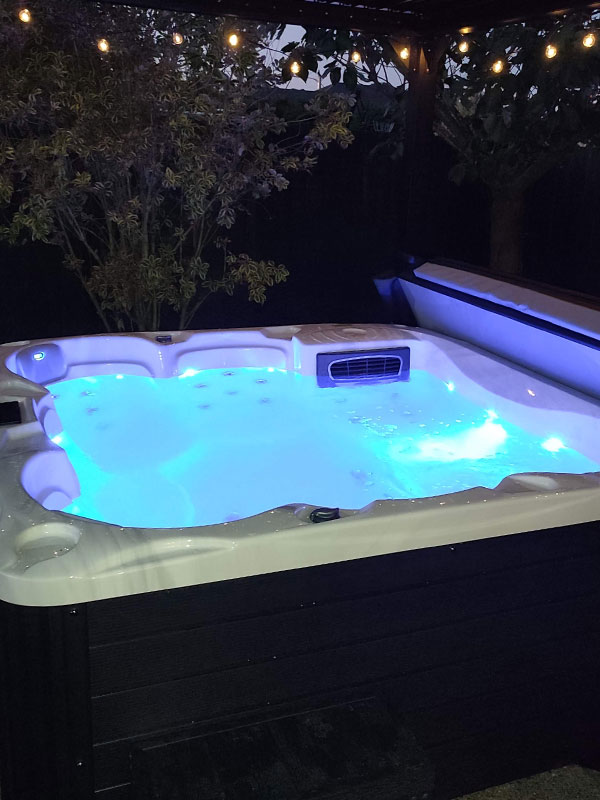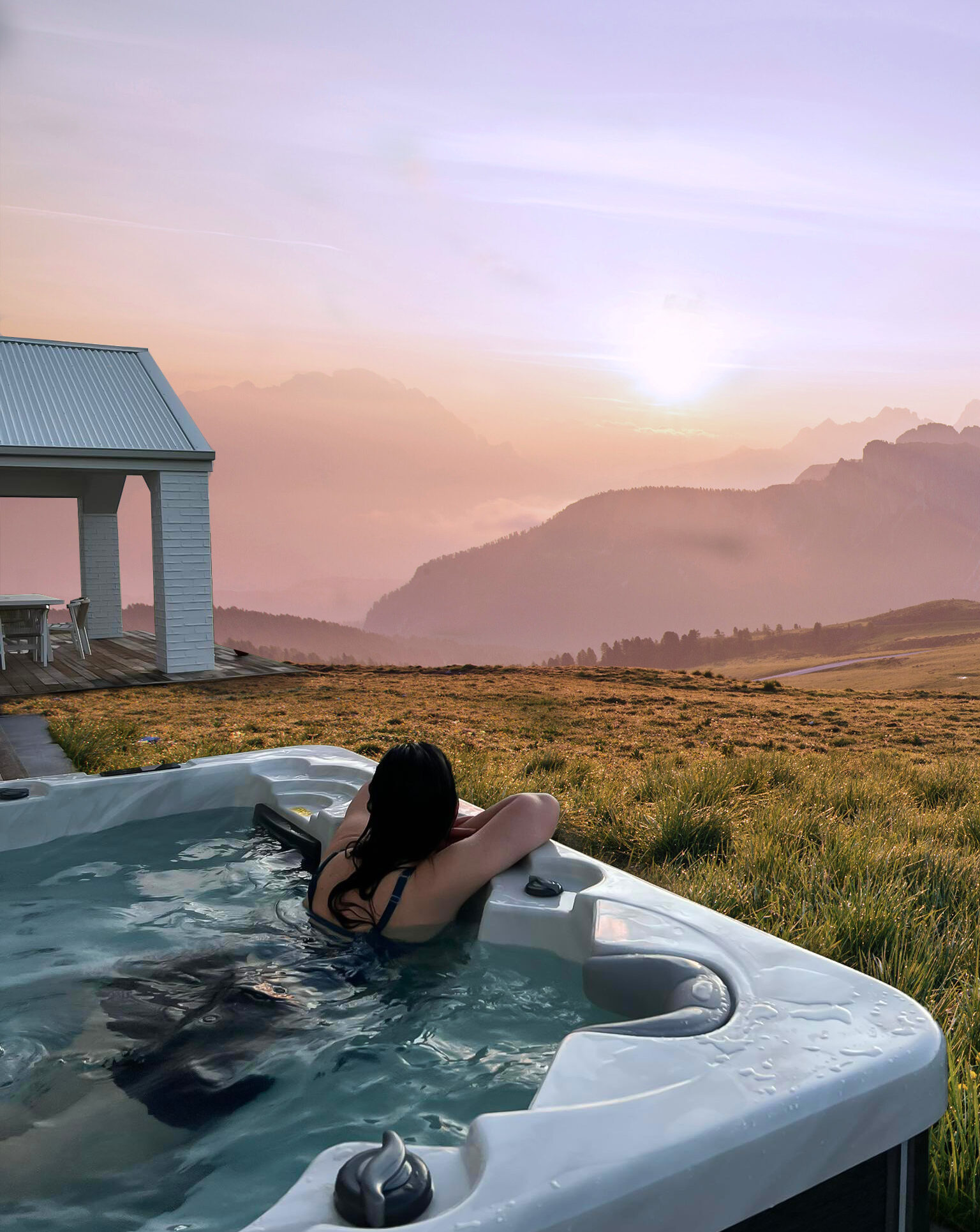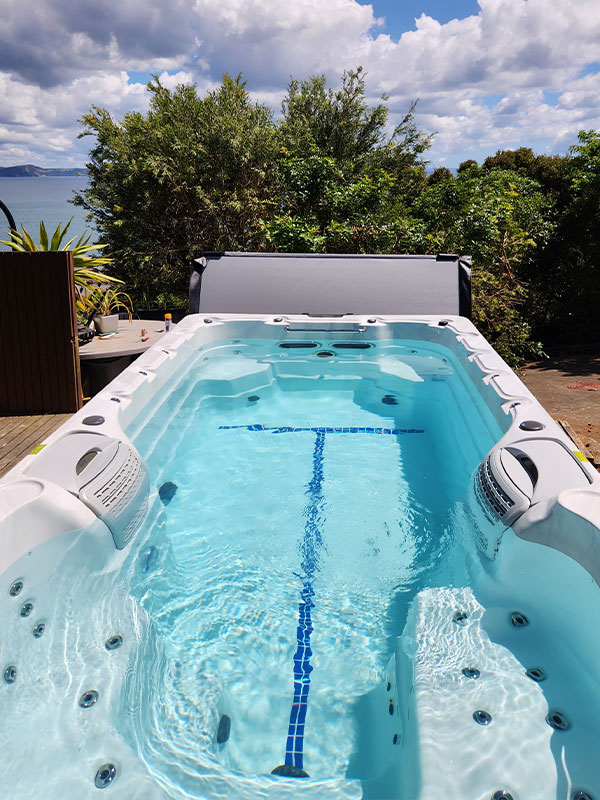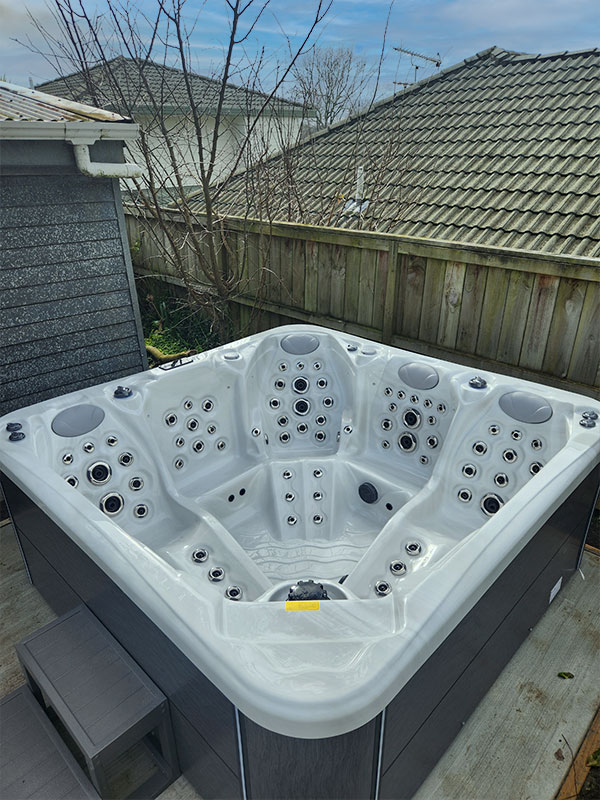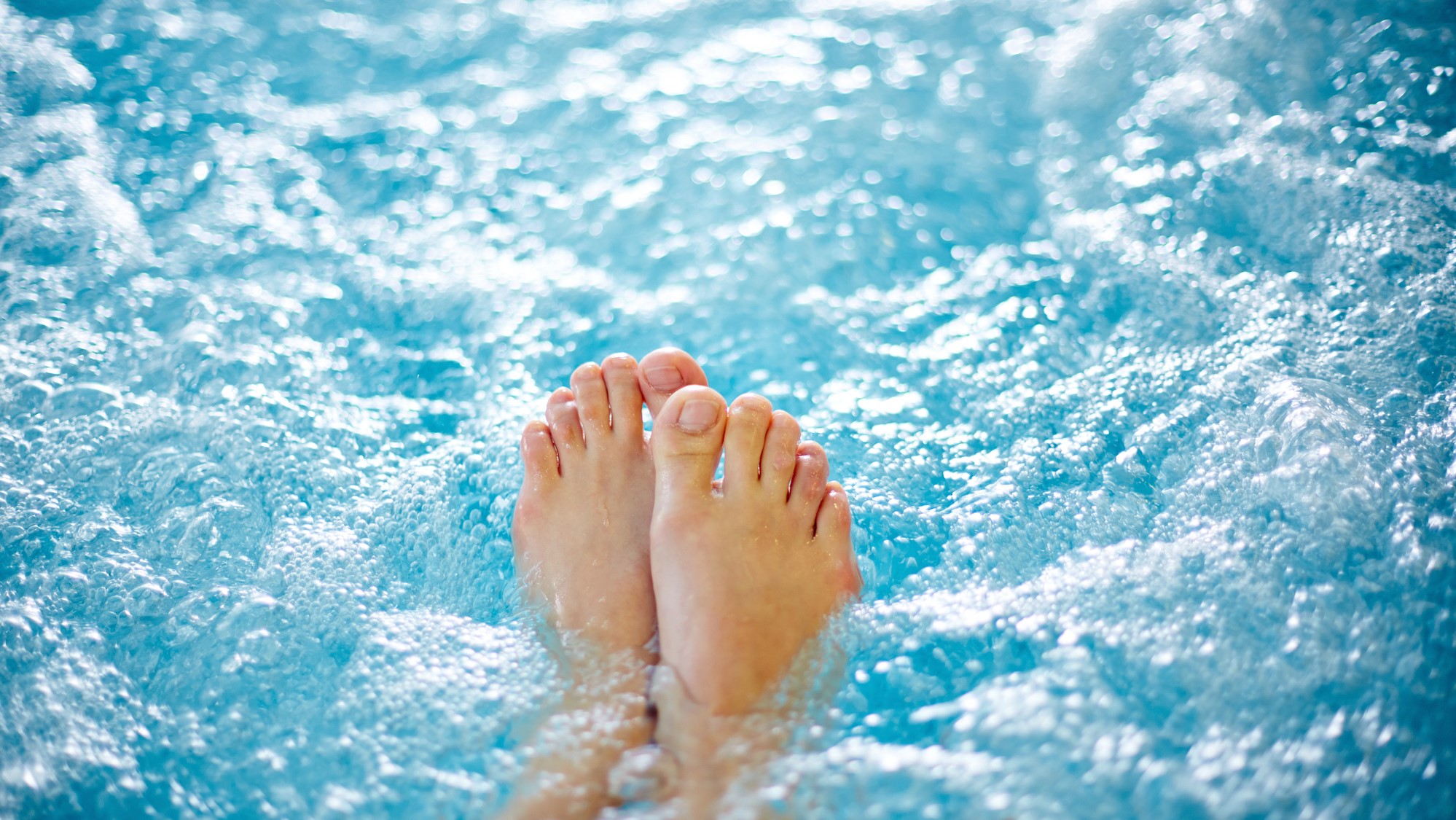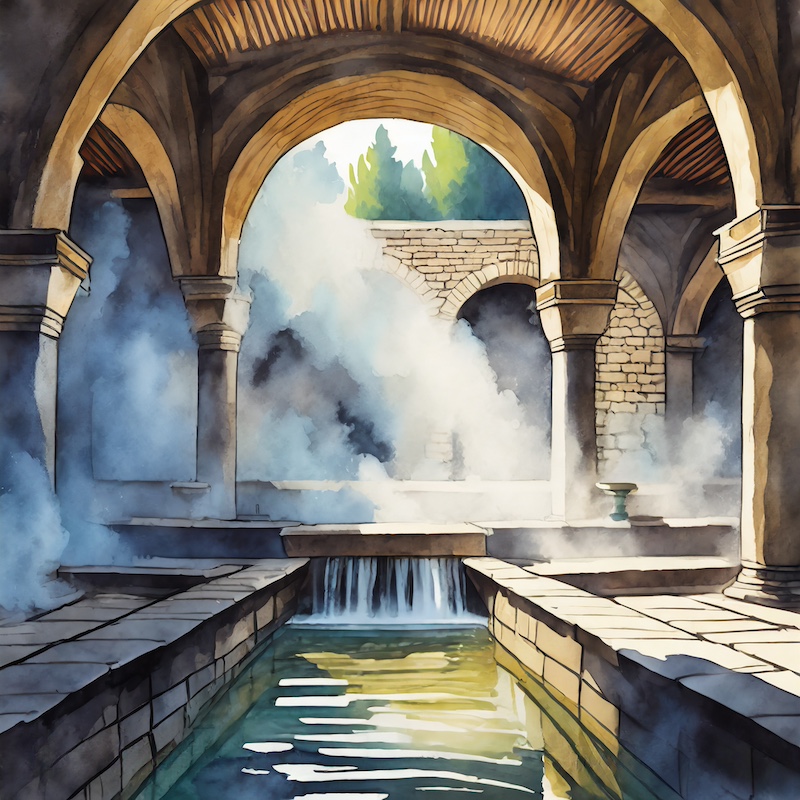
Hot pools, synonymous with relaxation and rejuvenation today, have a fascinating history deeply rooted in various cultures around the world.
From the ancient traditions of Japanese Onsens, where Samurai sought solace to reflect, to the opulent Roman bathhouses of emperors, the modest medieval European baths, and the Scandinavian baths where Vikings revelled in hot pools and saunas. The journey of spa pools spans centuries, playing a significant role in many cultures’ daily lives. This has evolved over time and mirroring technological advancements over the centuries.
In this article, join us at Jet Spas as we embark on a journey through history, exploring the origins, cultural influences, and technological evolution of spa pools.
I. Ancient Beginnings: Japanese Onsens
One of the earliest records of spa-like bathing can be traced back to Japan, where onsens (natural hot springs) have been an integral part of the culture for thousands of years.
The Japanese revered these natural geothermal wonders for their therapeutic properties and spiritual significance. Samurai, known for their intense training and battles, as well as their moral code and poetic nature, sought respite in onsens to cleanse their bodies and also to relax their minds.
The communal nature of onsens allowed samurai and the common folk of feudal Japan to bond, socialise, discuss, and forge friendships and alliances. This turned these hot springs into sanctuaries for both physical and mental rejuvenation, as well as places where peace was sought, disputes were settled, and deals were made.
II. Ancient Greek Bathhouses: The Meeting Place of Great Minds
In the ancient world, particularly during the height of Ancient Greece, bathhouses transformed into intellectual and philosophical epicentres.
Far more than mere spaces for physical cleansing, these communal havens became vibrant arenas where individuals from diverse backgrounds convened to explore profound questions and engage in meaningful discourse.
Prominent philosophers of the era, including luminaries like Socrates, Plato, and Aristotle, were drawn to the welcoming embrace of Greek bathhouses. Immersed in the warm waters, these thinkers found an ideal setting for spirited discussions, exchanging ideas that would leave an indelible mark on the philosophical landscape.
The bathhouse, with its lively and conversational atmosphere, served as an unconventional yet enriching backdrop for the exchange of intellectual perspectives. This created the perfect location for the intersection of physical rejuvenation and philosophical debate.
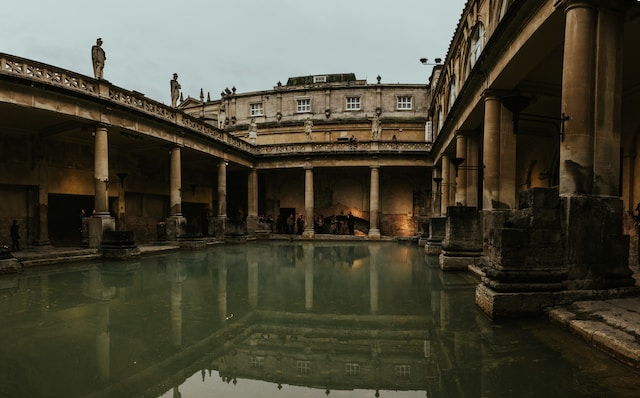
III. Roman Opulence: Bathhouses as Social Hubs
In ancient Rome, bathhouses emerged as lavish social centres rather than mere bathing facilities.
The Roman bathhouses were architectural marvels equipped with hot and cold pools, saunas, and massage rooms. The opulence of these structures reflected the grandeur of the Roman Empire.
What’s more, bathing became a social event, and the communal aspect was emphasised. Romans engaged in conversations and debates and even conducted business transactions while enjoying the therapeutic benefits of the baths.
The Roman baths were a manifestation of the empire’s wealth and a testament to the importance placed on physical well-being and social interactions.
IV. Medieval European Baths: A Blend of Tradition and Luxury
As the Roman Empire declined, the tradition of public bathing in Europe waned, but the recognition of the therapeutic benefits of hot water persisted.
This meant that medieval European society maintained the concept of communal bathing, often within monasteries. As baths were appreciated not only for cleanliness but also for their perceived medicinal properties.
These monastic bathhouses served as places for both monks and the local community to engage in cleansing rituals, reinforcing the connection between hygiene and health in medieval Europe.
V. Viking Retreats: Hot Pools and Saunas in Scandinavia
While Vikings are often associated with rugged seafaring and conquest, they also had a unique approach to relaxation. In the Nordic lands, Vikings were known to indulge in hot pools and primitive saunas.
They used heated stones which were placed in carved-out pools to create warm water, providing respite from the harsh climate. Because of this, the Vikings also developed the precursor to modern saunas, using fire-heated stones to generate steam in small, enclosed spaces.
These practices not only served practical purposes in combating the cold but also had communal and spiritual dimensions, with bathing rituals being an integral part of Norse culture.
VI. Renaissance Revival: The Return of Spa Culture
With the Renaissance came a renewed interest in classical ideas, including the Roman bathing tradition.
European elites embraced the concept of “taking the waters,” and spa towns centred around natural springs flourished. These spas became popular retreats for the wealthy, seeking relaxation, entertainment, and medicinal benefits.
The Renaissance saw the revival of communal bathing, with an emphasis on the healing properties of water, aligning with the classical belief in the therapeutic power of immersion.
VII. 18th Century Innovations: Hydrotherapy and Spa Tourism
The 18th century witnessed a surge in interest in hydrotherapy, promoting water’s healing properties. Spa tourism gained momentum as people flocked to mineral springs, seeking cures for various ailments.
Spa resorts, offering a blend of leisure and health, and became fashionable destinations for the upper class. Hydrotherapy, often combined with botanical treatments, gained popularity, emphasising the holistic approach to well-being.
VIII. Victorian Splendor: Spa Pools in the 19th Century
The Victorian era saw the rise of grand spa resorts, often featuring elaborate and ornate bathhouses.
Spa culture continued to evolve, emphasising the therapeutic benefits of water and technological advancements with improved water heating and circulation systems.
The 19th century also witnessed the advent of balneotherapy, a form of water therapy, as physicians began prescribing spa treatments for various medical conditions.
Spa pools became not only symbols of opulence but also hubs for health and wellness.
IX. 20th Century Innovations: From Jacuzzis to Hot Tubs
The 20th century marked a significant shift in spa pool technology. Particullary with the invention of the Jacuzzi in the 1950s by the Jacuzzi brothers which revolutionised personal hydrotherapy.
Portable hot tubs became popular, bringing the luxury of spa pools in to private homes.
This era also saw the integration of therapeutic massage jets and the rise of hydro-massage as a key feature in modern spa pools, enhancing the overall relaxation experience.
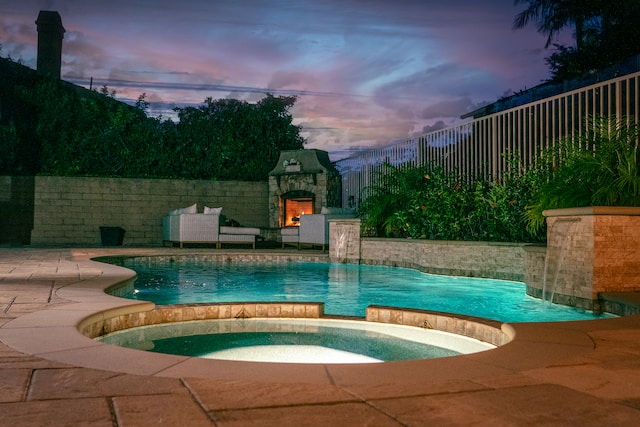
X. Modern Wellness: Spa Pools in the 21st Century
In the 21st century, spa pools have become synonymous with wellness and relaxation.
Advanced technology has made it possible to customise water temperature, jet intensity, and lighting. This can provide users with a tailored spa experience. With the integration of smart technology, it has further enhanced the convenience and control of spa pool features.
There is a growing emphasis on incorporating aromatherapy, chromotherapy, cryotherapy and contrast therapy into spa pool experiences, for a more holistic wellness approach.
XI. Global Spa Culture: Fusion of Traditions
Today, spa culture is a global phenomenon, with each region contributing its unique touch. From traditional Japanese onsens to Scandinavian saunas, spa pools have transcended borders, enriching the global wellness landscape.
Cross-cultural influences have led to the combination of diverse spa traditions, creating the ultimate mix of all the sciences.
XII. The Future of Spa Pools: Sustainable Luxury and Innovation
Looking ahead, the spa pool industry is poised for further innovation. Sustainability is a growing focus, with eco-friendly materials and energy-efficient technologies gaining prominence.
The future promises a harmonious blend of luxurious relaxation and environmental consciousness. Modern spa pools now combine all of the best advancements from thousands of years of history in order to deliver the very best experience for users, which Jet Spas offer to New Zealanders with their spa pools
Contact us at Jet Spas today to explore our range of spa pools tailored to your lifestyle.
FLEXIBLE SHIPPING. Jet Spas will deliver your spa pool to your home and even into place anywhere in New Zealand.
Delivery Locations
For modern day spa pools in Auckland | Hamilton | Tauranga | Whakatāne | Rotorua | Taupō | Gisborne | New Plymouth | Napier | Hastings | Whanganui | Palmerston North | Wellington

